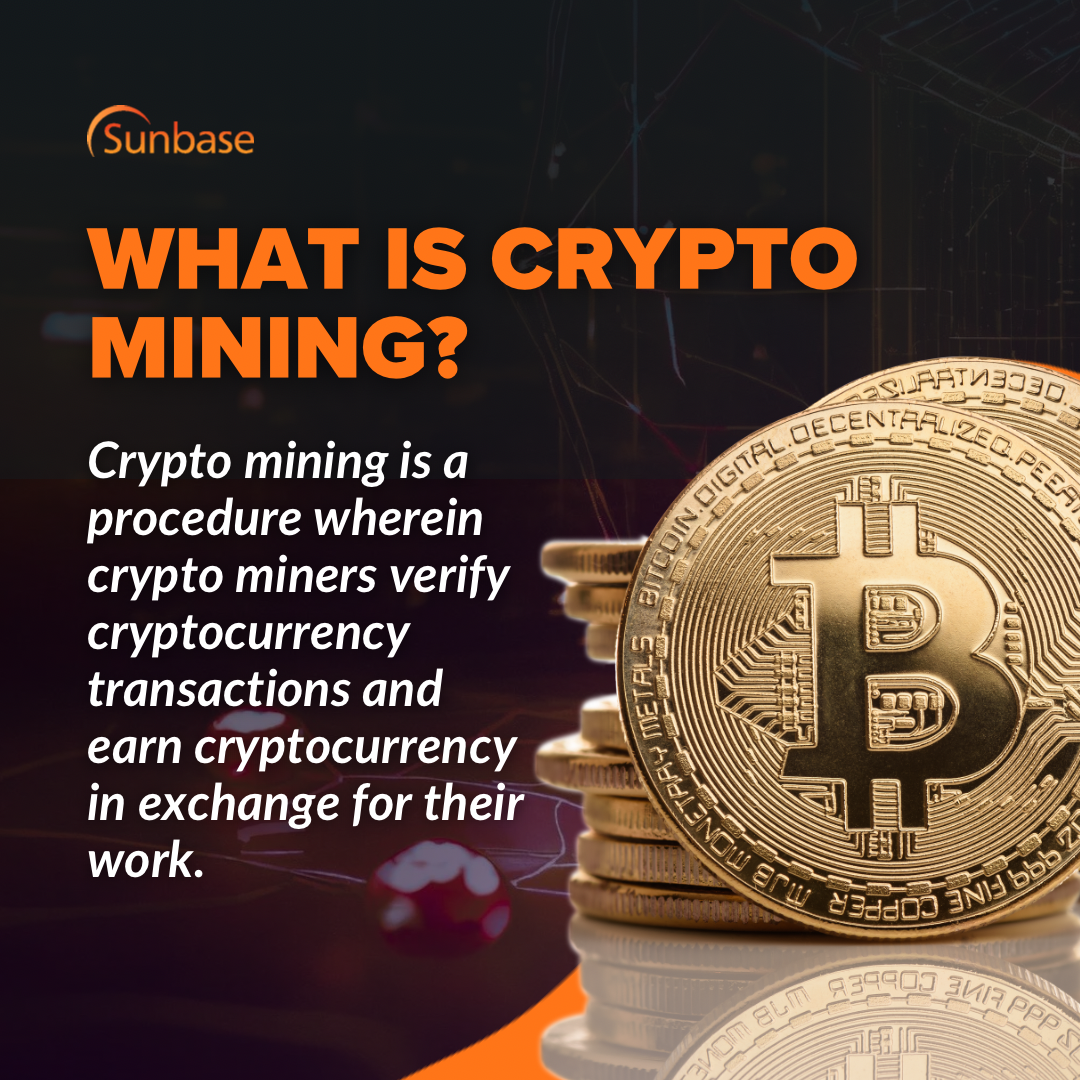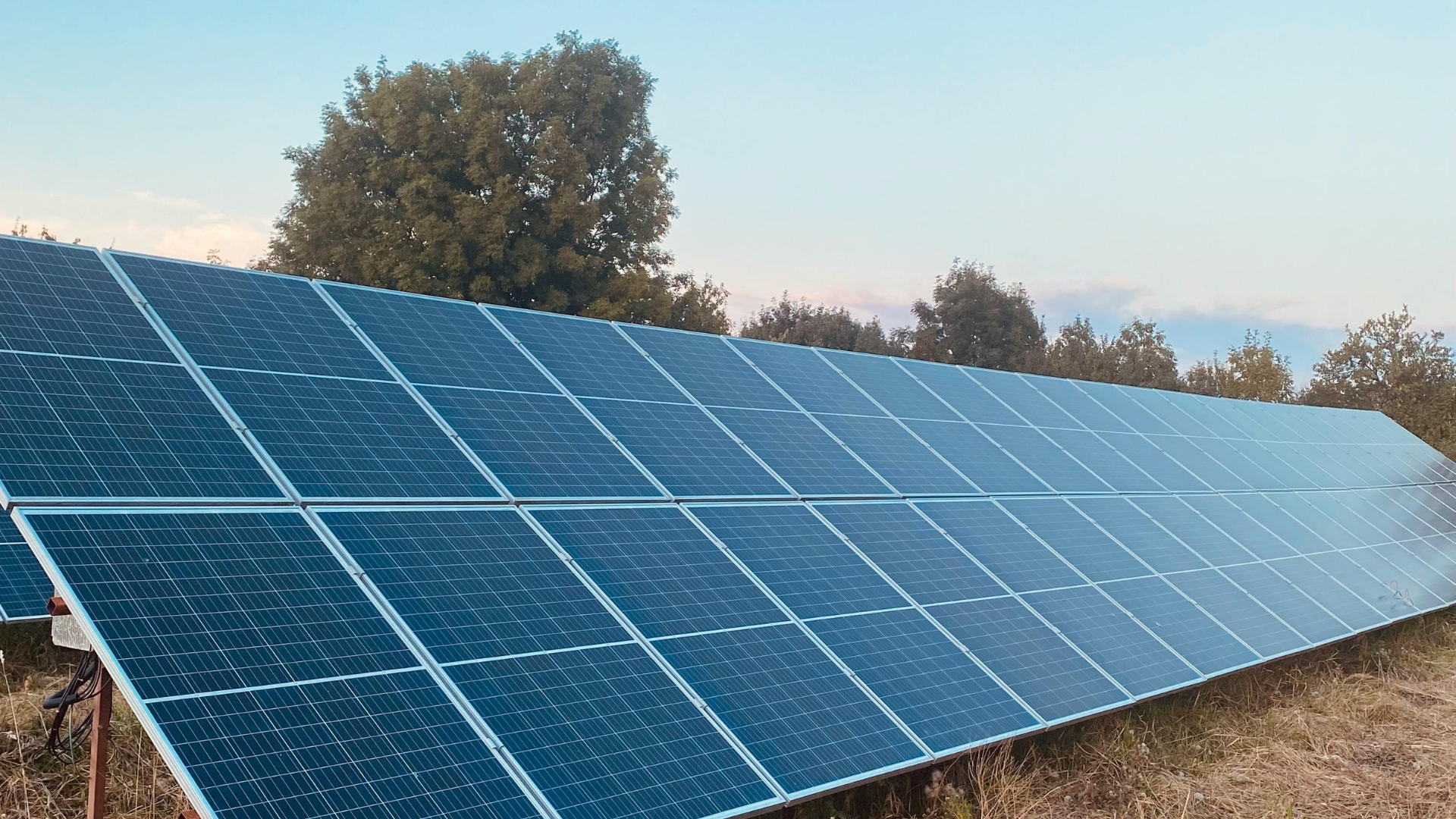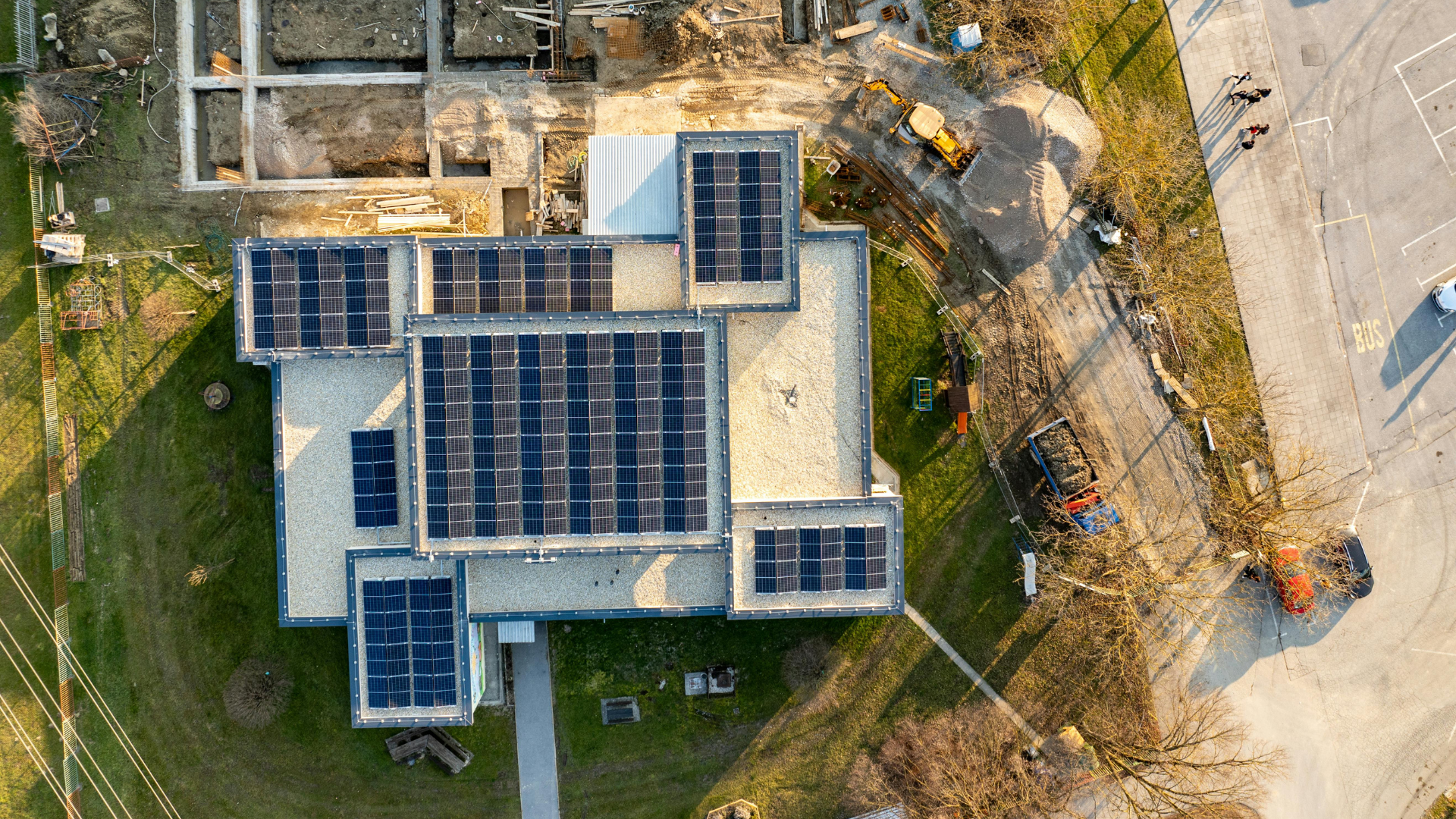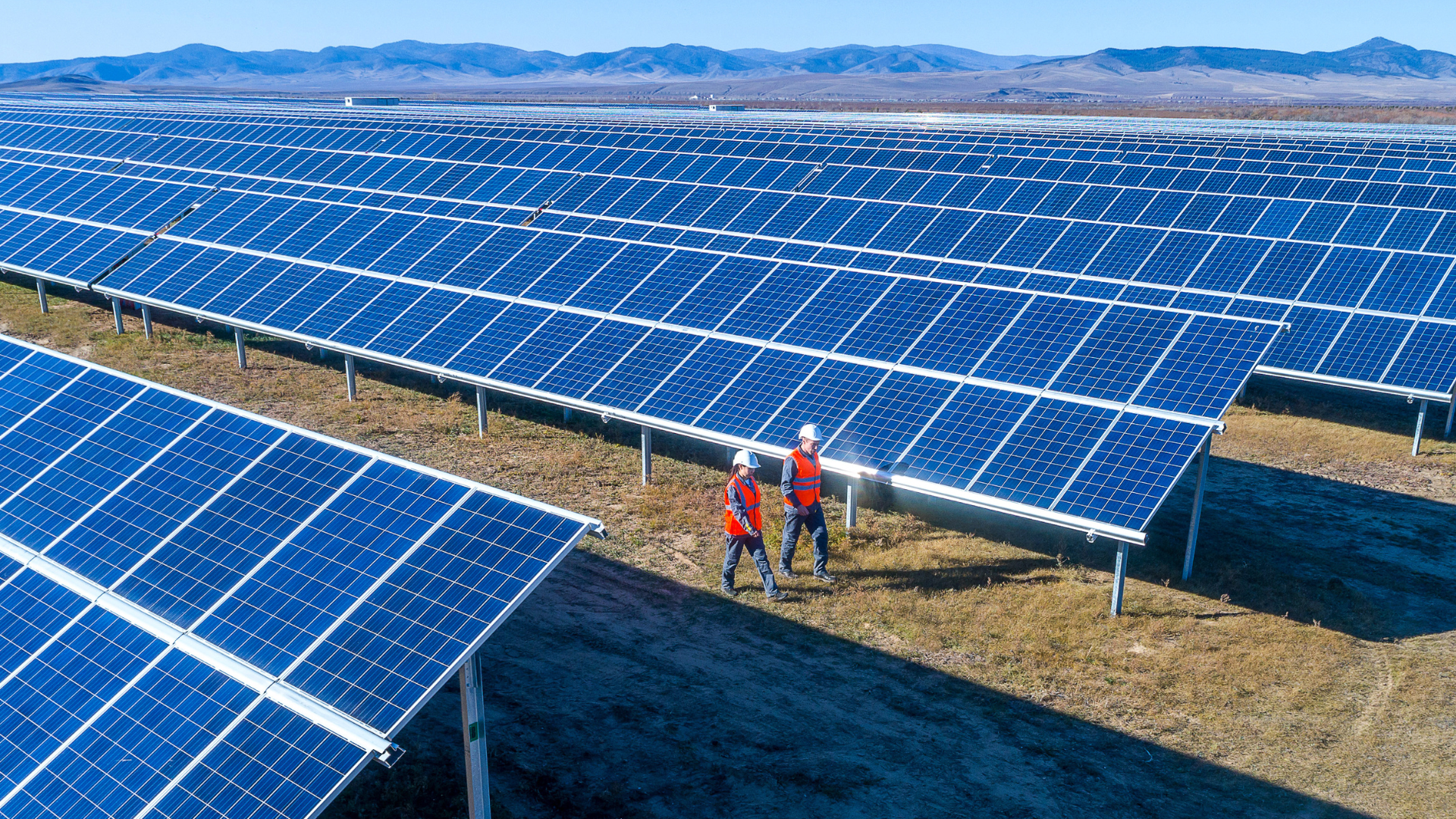December 29, 2024
Behind every Bitcoin mined and every transaction verified lies an invisible yet immense force — energy. As crypto mining expands globally, so does its hunger for electricity, sparking environmental and economic challenges.
But amidst these rising energy costs and carbon concerns, a new opportunity shines through — solar energy. For forward-thinking installers, the intersection of cryptocurrency and renewables isn’t just a futuristic concept; it’s a rapidly growing market ready to be tapped.
Solar Energy’s Role in Crypto Mining: Unlocking Opportunities for Installers
Have you ever wondered what powers cryptocurrency from behind the scenes? It's not simply decentralized networks or tech-savvy programmers—it's electricity.
Crypto mining, which involves minting new currency and verifying blockchain transactions, has a high cost: skyrocketing energy consumption. As concerns about cryptocurrency mining's carbon footprint grow, renewable energy is an opportunity maker.
Solar energy, notably, offers a cost-effective and eco-friendly method to fuel this energy-intensive industry. For solar installers, it represents an environmental shift and a significant economic opportunity to capitalize on.
Let's explore this intersection of crypto and solar energy in detail!
Key Takeaways
- Sustainable energy sources like solar power are replacing fossil fuels due to the energy-intensive nature of cryptocurrency mining.
- Mining rigs have significant energy demands, and solar energy provides plentiful, affordable, and sustainable options.
- Solar installers can control a developing market by offering cryptocurrency miners customized solar solutions.
- Sunbase gives installers the resources to provide mining operations with scalable and effective solar solutions.
The Basics of Crypto Mining
When you hear the word 'crypto mining,' you may envision pickaxes and underground tunnels, but this modern mining occurs in data centers powered by raw computer power.
As interest in cryptocurrencies grows, everyone must comprehend the basic principles of crypto mining. Visualizing where the work is being done, what is needed to drive it, and who or what is involved can help one comprehend how things work.

What is Crypto Mining?
Crypto mining is a procedure wherein crypto miners verify cryptocurrency transactions and earn cryptocurrency in exchange for their work.
> What are the key factors in crypto mining?
- Blockchain Verification: Crypto mining primarily aims to validate blockchain transaction blocks, guaranteeing the network's accuracy and safety.
- Proof-of-Work (PoW): Miners attempt to solve complex math problems as part of most cryptocurrencies' "Proof-of-Work" consensus strategy to add a block to the blockchain and earn a reward.
- Mining Hardware: To mine cryptocurrencies, users need specialized technology, such as powerful Graphics Processing Units (GPUs) and Application-Specific Integrated Circuits (ASICs), that can execute complex computations promptly.
- Mining Pools: Since mining is becoming increasingly complex, most miners join "mining pools" where their pooled processing power increases the likelihood that they will locate a block and receive rewards.
> How does crypto mining work?

Let's see how cryptocurrency mining operates.
1. Transaction generation
The ledger for traditional currency is centralized, so transactions can only be verified by official authorities and banks. In contrast, for crypto mining, everyone validates and confirms transactions in dispersed cryptocurrency systems, forming a distributed network.
The decentralized network works similarly to the web, with numerous computers and users participating, preventing any organization or individual from controlling the network.
2. Block creation
Cryptocurrencies use distributed ledger technology to decentralize monetary transactions. That ledger is called a blockchain. Crypto mining involves verifying data blocks and uploading them to the blockchain. This approach enables a trustless, peer-to-peer currency system.
Verifying blocks requires crypto miners to add a new block to the blockchain, track the transaction on the block, and confirm the data in the block.
3. Solving the puzzle
Crypto mining involves a challenging verification procedure. Miners must use code-cracking techniques to accurately predict the code linked to the data on the most recent block.
4. Validation and reward
The first miner to successfully guess the latest block's challenging code in crypto mining then sends their calculations to other miners on the network. The initial miner is rewarded with cryptocurrency and transaction fees if other miners successfully verify the code.
> What are the Energy Demands associated with Crypto Mining?
Crypto mining sounds digital, but the energy needed is surprisingly accurate.
It comes with a demand for high amounts of energy. The process of mining cryptocurrencies is expensive and time-consuming. Miners must spend to create tremendously powerful processing rigs, which require large amounts of energy to fuel.
Did you know?
The cumulative energy consumption of all cryptocurrency assets ranges between 0.4% and 0.9% of the world's yearly electrical consumption, or 120 to 240 billion kWh annually. Thus, it uses more power than all the data centers in the world combined.
What are the Challenges of Traditional Energy Sources in Crypto Mining?

Let's find out!
1. Environmental Concerns
Bitcoin mining requires a lot of electricity since it uses the proof-of-work technique to secure the blockchain network and validate transactions. This process is a major contributor to global climate change, equal to Poland's yearly energy use.
Fossil fuels are the primary electricity source in mining areas, which leads to greenhouse gas emissions.
The energy used for Bitcoin mining equals the yearly emissions of whole countries.
According to LSE data, the United States generates about 46% of the world's emissions from Bitcoin mining, which amounts to 15.1 million metric tons of CO₂ annually.
2. Rising Energy Costs
The demand for electricity to run mining operations rises in line with the demand for cryptocurrency. As a result, energy prices have increased in many areas, which can significantly affect the profitability of mining operations.
Market circumstances and regulatory changes can cause significant fluctuations in energy prices. For example, miners in regions where power costs have historically been cheap might have to pay more if demand increases or local governments impose stricter energy consumption laws.
3. Regulatory Pressures
As governments worldwide struggle with the environmental impact and energy consumption of cryptocurrency mining, the regulatory climate surrounding this activity is changing quickly.
- Cryptocurrency mining facilities are under scrutiny due to environmental concerns and high energy consumption.
- Some regions offer incentives for renewable energy miners, but compliance costs can be high.
- Smaller businesses may struggle to comply, and governments may consider banning mining altogether due to its adverse environmental effects.
Miners must pay to build rigs that can provide massive processing power, and significant amounts of electricity must drive the rigs. Everything depends on striking an optimal balance between the operation's expenses and profit potential.
Renewable Energy as the Solution
Have you ever wondered what can drive the cryptocurrency industry apart from conventional resources? Renewable energy has the potential to meet the enormous energy appetite that exists beyond ledgers and algorithms.
Curious? See how it can fulfill the demands for rising electricity costs.
> Why Solar Energy?
- Abundance and sustainability of solar power: The sun is an infinite renewable energy source ideal for mining operations. A well-designed solar power system that consistently produces energy from the sun can meet the high demands of mining rigs.
- Decreasing costs of solar panel installations: Over the years, installation costs have declined dramatically, making mining-specific solar panel systems cost-effective.
Learn more about the Climate Impact on Solar Panels: How Sunbase Solar Solutions Enhances Durability.
> How does solar energy impact crypto mining efficiency?

Solar farms can help miners produce electricity, reducing their dependency on power systems and fluctuating energy prices.
- Cost Efficiency in the Long Run: Solar panels are a one-time investment that lasts between 25 and 30 years, compared to fossil fuel-powered electricity, which requires monthly bills.
- Energy Independence and Security: Solar panels can provide a steady electricity supply for solar energy bitcoin mining, even in adverse conditions or power disruptions.
- Reduction in Carbon Footprint: Solar-powered bitcoin mining can decrease a miner's carbon footprint. Solar power is one sustainable energy source that can drastically reduce greenhouse gas emissions.
Integrating solar energy and blockchain technology also promotes energy independence and innovation in creating new technological solutions.
Look at How Sunbase Optimizes Solar Installation to Meet Peak Demand Times.
How Can Installers Benefit From Solar Crypto Mining?

There's a growing need for solar revolution, and it's time to discover this hidden opportunity!
1. Expanding Market Potential
There is a growing need for solar panel systems designed specifically for mining operations. Installers can capitalize on this growing market by providing mining rigs with specialized solar systems that satisfy their high energy requirements.
2. New Revenue Streams
Mining is a complex and costly activity. Creating and setting up solar power systems for operations generates fresh income streams. In addition to the initial installation, services like system updates, energy storage systems, and maintenance offer continuous commercial potential.
3. Partnerships with Crypto Mining Operations
Working together with cryptocurrency miners enables installers to build long-term connections.
Through comprehension of the unique energy requirements of mining operations, installers may create effective solar panel systems that guarantee energy security and independence.
These collaborations may result in recommendations and a significant presence in the specialized market for solar-powered cryptocurrency mining. So, what helps solar installers achieve this goal?
Sunbase Solar Software: Empowering Solar Installers to Succeed

Deliver exceptional results with just one tool- Sunbase!
1. Accurate Design and High-Quality Solar Layouts
Sunbase offers sophisticated design tools for creating accurate and distinctive solar plans. It guarantees the best possible system performance for every project through precise site measurements and automated shading analysis.
2. PV System Production & Financial Estimation
Accurately calculate energy production and financial returns. To assist businesses in seeing the return on their investment, Sunbase provides installers with comprehensive performance estimates and ROI calculations.
3. Real-Time System Performance Estimates
With real-time performance information, stay ahead of the game. Sunbase gives installers the ability to track and evaluate system performance, guaranteeing that every project meets or exceeds expectations.
4. Professional Proposal Generation
Make a good impression on investors with polished proposals. With performance measurements, financial advantages, and top-notch visuals, Sunbase makes it easier to create personalized presentations.
To learn more, see A Complete Guide to Using Solar Proposal Software: From Quoting to Contract.
5. Streamlined Project Management
Sunbase simplifies the entire project management process. You can efficiently manage resources, track deadlines, and collaborate from a single platform.
Now you know what makes Sunbase your go-to tool!
In a nutshell
With great power comes excellent responsibility! Miners need the power, and installers need the right tools to achieve it!
Mining cryptocurrencies has historically been linked to significant fossil fuel usage, which harms the environment. However, increased awareness of climate change has fueled the hunt for greener and more sustainable alternatives.
Solar energy is one of the most promising substitutes in this regard. This plentiful and sustainable energy source is the best way to power mining operations.
About Sunbase
Harness the sun’s potential to fuel tomorrow’s digital economy. With Sunbase, installers get an all-in-one solar management platform designed to simplify design, estimation, and execution. Deliver precise layouts, boost efficiency, and expand your market by powering the crypto revolution — sustainably.
Start building thefuture today — with Sunbase.
FAQ's
How Many Solar Panels Are Required for Bitcoin Mining?
The size of mining activities determines how many solar panels or how much solar power is needed. For instance, a single mining rig differs in power usage from others.
Considering peak sun hours and energy storage requirements, a solar panel system that generates similar power is necessary to offset this energy.
What are the advantages of using energy generated from solar power for cryptocurrency mining over conventional energy sources?
Solar power provides various advantages, including decreased greenhouse gas emissions, cheaper operating costs, and improved energy independence.
How can solar installers benefit from the rise of crypto mining?
Installers can tap into a rapidly expanding niche by providing customized solar setups tailored to crypto mining’s high energy needs. This creates opportunities for ongoing maintenance, energy storage installations, and long-term client partnerships.
I agree to receive marketing messaging from Sunbase at the phone number provided above. I understand data rates will apply, and can reply STOP to OPT OUT.











